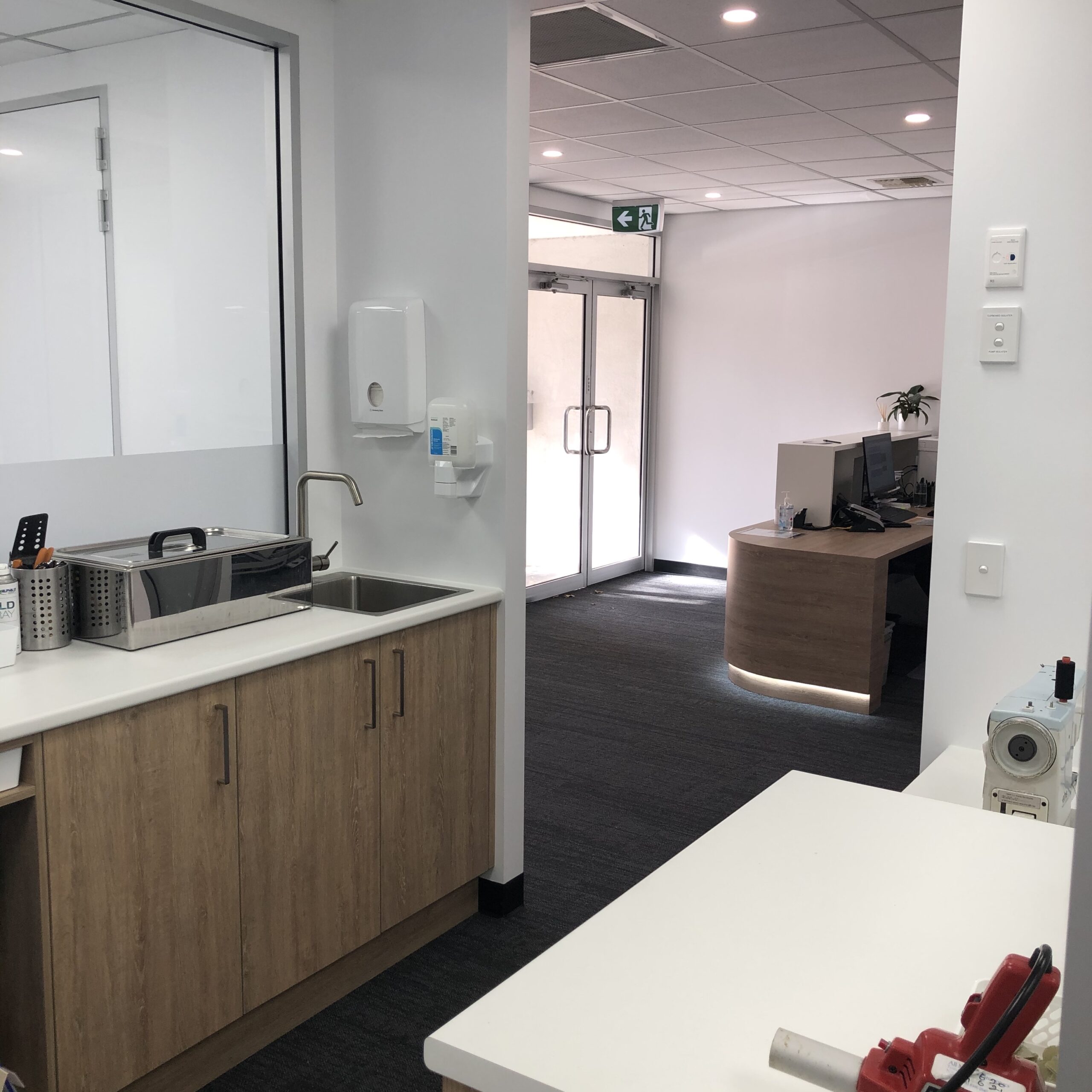
SA Hand Therapy embarked on a project 2 years ago. To create a custom-designed clinic from the ground up on Wakefield Street, Adelaide. Over the past 30 years of being in the business of treating upper limb injuries, the business has had numerous locations and offices including in Adelaide CBD and North Adelaide. Some have been co-located with specialists and other allied health professionals and others stand-alone. Daw Park has been the basis of our main operations for most of this time. Our Daw Park clinic has suited us well over the years. It continues to operate with a small but functional waiting room, administrational area, back office and shared treatment spaces (useful for staff training.) Our Daw Park rooms are probably best described as homely.
Embarking on the new Wakefield Street project, elicited excitement. We went about creating a completely different type of space to Daw Park and other clinics.
Our design brief was to achieve 3 private consulting rooms in the 100sqm space which were accessible, had enough storage space and a small staff kitchen. A unique requirement for hand therapy space is to have a designated area to make our customised splints / braces which typically necessitates a large water bath / bayonet, working bench space, a heat gun, sewing machine and access to a basin. One of the other challenges in this setting is we routinely move from patient to work-bench areas. We also move between treatment spaces to help each other for tricky cases when needed.
In addition to the design layout, we wanted to achieve an uncluttered, bright and calming environment. A hand or arm injury can have such a large impact causing a degree of stress and anxiety. We wanted a space where patients would feel comfortable. This was not so easy given there was only one naturally lit window on the street front. It was achieved using carefully placed windows, bright LED lighting and bright white paint.
Interestingly, there is a large degree of evidence about benefits of good design in health care (see references below). This can lead to helping patients heal faster, increases worker productivity and improves well-being and social connectedness.
Almost 2 years on and reflecting on our custom clinic, we feel several benefits to both patients and staff have been noticed. The following themes have emerged:
The splinting workshop area in particular is opposite the administration desk and adjacent to the waiting room. We have found team members are collaborating better with increased communication in particular between the administrative team and therapists. Administrative staff get to observe the workshop activities, giving an understanding of the role of a hand therapist. This helps immensely with directing care appropriately from initial enquiries to our service.

Due to our workshop being adjacent to the waiting room, patients also get to be ‘in on the action’ or at least observe a therapist making a splint or using the sewing machine. It tends to create conversations between patients whilst waiting, between therapist and patients and between patients and administrative staff. This creates an inviting sense of space and sometimes might help to breakdown any pre-conceived worry or fear about coming to an appointment with a hand injury. A hand or arm injury typically causes pain and loss of function. Also often with a sense of worry. We think the physical space we have created reduces patient fear and worry before they even enter the therapist’s room which makes for a more productive session.
Most of all, we feel the space is easy for therapists to make a splint and return to their patient in each of the private rooms. It allows for quick transition between patient and the workshop area. We have beds in each room which also serve as a treatment option for patients that might need to lie down on a comfortable plinth.
We are in the process of hanging artworks in the clinic gifted from patients. They have used art to express their rehabilitation journey or to help with hand and arm function. We hope to continue to showcase some beautiful and unique works in this space and use the artwork for future inspiration of patients and their recovery.
So does health space design improve our patient outcomes? We think so. There is a plethora of research and evidence on healthcare design in relation to patient benefits. We hope that if you choose to visit / book the Wakefield Street clinic in Adelaide CBD that you will enjoy your experience of our proud space.
References:
The Case for Good Design – Healthcare – https://www.ovga.vic.gov.au/case-good-design-healthcare-guide-government
Ulrich, R. S., Zimring, C., Zhu, X., DuBose, J., Seo, H. B., Choi, Y. S., Quan, X., & Joseph, A. (2008). A review of the research literature on evidence-based healthcare design. HERD, 1(3), 61–125. https://doi.org/10.1177/193758670800100306